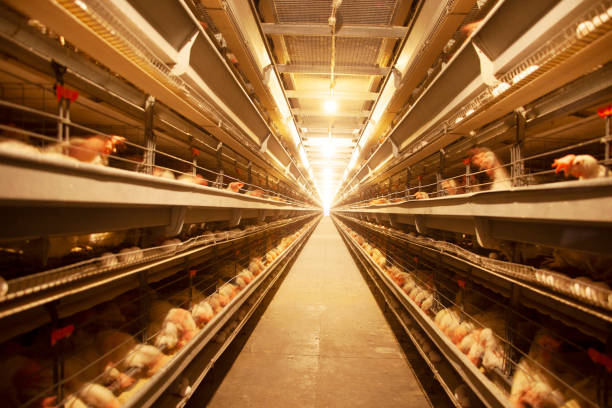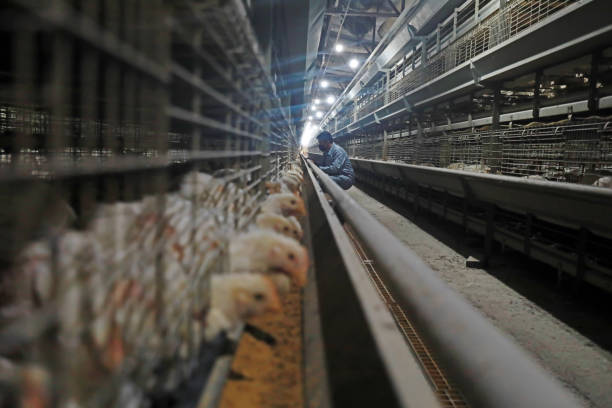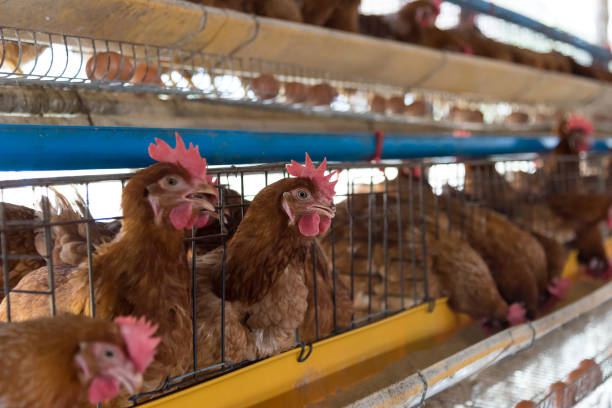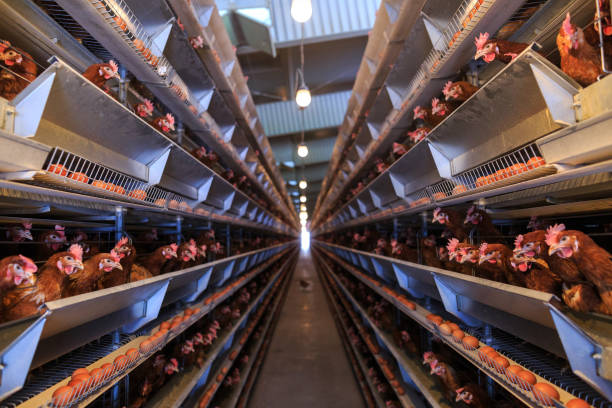
Cost-Effective Automatic Poultry Cages: A Price Guide for African Farmers
Cost-Effective Automatic Poultry Cages: A Price Guide for African Farmers
For African farmers looking to boost their poultry production, automatic poultry cages offer a game-changing solution. These systems, designed to streamline operations and maximize efficiency, can significantly improve egg production, reduce labor costs, and enhance the overall health and welfare of your chickens. However, understanding the cost implications is crucial for making informed investment decisions. This guide provides a comprehensive overview of the factors influencing the price of automatic poultry cages and offers practical tips for African farmers to find cost-effective solutions.
Why Choose Automatic Poultry Cages? The Benefits
Before diving into the specifics of pricing, it’s essential to understand the advantages of investing in automatic poultry cages. These systems are designed to automate key processes in poultry farming, leading to numerous benefits:
Increased Egg Production: Automatic cages provide a controlled environment that optimizes laying conditions. Features like automated feeding and watering ensure that chickens receive consistent nutrition, leading to higher egg production rates.
Reduced Labor Costs: Automation reduces the manual labor required for feeding, watering, egg collection, and waste removal. This can significantly lower labor costs, especially for larger farms.
Improved Chicken Health and Welfare: Automatic cages are designed to promote better hygiene and reduce the risk of disease. Proper ventilation, automated waste removal, and easy access to food and water contribute to healthier and happier chickens.
Efficient Space Utilization: Cage systems allow for higher stocking densities, maximizing the use of available space. This is particularly beneficial for farmers with limited land.
Enhanced Egg Quality: Automated egg collection systems minimize damage and contamination, resulting in higher quality eggs that command better prices in the market.
Key Factors Influencing the Price of Automatic Poultry Cages
The price of automatic poultry cages can vary significantly depending on several factors. Understanding these factors is essential for comparing different options and finding a system that fits your budget and needs.
Cage Type and Size: The type and size of the cage system are major determinants of price. There are different types of cages available, including:
Layer Cages: Designed for egg-laying hens, these cages typically feature multiple tiers and automated egg collection systems.
Broiler Cages: Designed for meat chickens, these cages are built to accommodate faster growth rates and larger bird sizes.
A-Frame Cages: A popular choice for smaller farms, A-frame cages are relatively simple and cost-effective.
H-Frame Cages: More sophisticated and space-efficient, H-frame cages are suitable for larger-scale operations.

The size of the cage system, measured by the number of birds it can accommodate, also affects the price. Larger systems naturally cost more due to the increased materials and manufacturing involved.
Automation Level: The level of automation is another significant factor. Fully automatic systems, which include automated feeding, watering, egg collection, and waste removal, are more expensive than semi-automatic or manual systems. While the initial investment is higher, fully automatic systems offer greater long-term cost savings through reduced labor costs and increased efficiency.
Materials and Construction Quality: The quality of the materials used in the construction of the cages directly impacts their durability and lifespan. Cages made from high-quality galvanized steel are more resistant to corrosion and wear, leading to a longer lifespan and lower maintenance costs. However, these materials are typically more expensive.

Manufacturer and Brand Reputation: Established manufacturers with a reputation for quality and reliability tend to charge higher prices. However, investing in a reputable brand can provide peace of mind knowing that you are getting a durable and well-designed product with good after-sales support.
Included Features and Accessories: The features and accessories included with the cage system can also affect the price. Some systems come with optional features like:
Climate Control Systems: Ventilation fans, cooling pads, and heating systems can help maintain optimal temperatures and humidity levels inside the poultry house.
Lighting Systems: Programmable LED lighting systems can simulate natural daylight cycles, promoting better egg production and bird health.
Manure Removal Systems: Automated manure removal systems can improve hygiene and reduce labor costs.
Transportation and Installation Costs: These costs can vary depending on the distance from the manufacturer to your farm and the complexity of the installation. It’s important to factor in these costs when comparing different options.
Currency Exchange Rates: For African farmers purchasing cages from international suppliers, currency exchange rates can significantly impact the final price. Fluctuations in exchange rates can make the cages more or less expensive.
Price Range: What to Expect
Given the various factors influencing the price of automatic poultry cages, it’s difficult to provide an exact figure. However, here’s a general overview of the price ranges you can expect:
Small-Scale Systems (100-500 birds): For a small-scale operation, you might expect to pay anywhere from $1,000 to $5,000 for a basic automatic cage system. This would typically include essential features like automated feeding and watering but may not include advanced features like automated egg collection or climate control.
Medium-Scale Systems (500-2,000 birds): For a medium-sized farm, the cost could range from $5,000 to $20,000. These systems often include more comprehensive automation features like automated egg collection and improved ventilation.
Large-Scale Systems (2,000+ birds): Large-scale commercial operations can expect to invest upwards of $20,000, potentially reaching $100,000 or more, depending on the size, automation level, and included features. These systems are typically fully automated and designed for maximum efficiency and productivity.
Tips for Finding Cost-Effective Automatic Poultry Cages
While the initial investment in automatic poultry cages can be significant, there are several strategies that African farmers can use to find cost-effective solutions:
Compare Multiple Suppliers: Don’t settle for the first quote you receive. Contact several suppliers and compare their prices, features, and warranty terms. Online marketplaces and trade shows can be good sources for finding different suppliers.
Consider Semi-Automatic Systems: If a fully automatic system is beyond your budget, consider a semi-automatic system. These systems offer some automation benefits while being more affordable. You can always upgrade to a fully automatic system later as your business grows.
Prioritize Essential Features: Focus on the features that will have the biggest impact on your productivity and profitability. For example, automated feeding and watering are essential for maintaining consistent nutrition and reducing labor costs. Automated egg collection can also be a worthwhile investment, especially for larger farms.
Look for Durable Materials: While cheaper options may be tempting, investing in cages made from durable materials like galvanized steel can save you money in the long run. These cages will last longer and require less maintenance.

Check for Local Manufacturing: Purchasing cages from local manufacturers can reduce transportation costs and make it easier to access after-sales support. Look for manufacturers that offer quality products at competitive prices.
Explore Financing Options: Many financial institutions offer loans and financing programs specifically for agricultural investments. Explore these options to make the purchase of automatic poultry cages more affordable.
Consider Second-Hand Equipment: Purchasing used automatic poultry cages can be a cost-effective option, especially for farmers on a tight budget. However, be sure to inspect the equipment carefully and ensure that it is in good working condition.
Negotiate with Suppliers: Don’t be afraid to negotiate with suppliers to get the best possible price. You may be able to negotiate a discount or get additional features included in the package.
Plan for Long-Term Savings: While the initial cost of automatic poultry cages may be significant, remember to consider the long-term savings in terms of reduced labor costs, increased egg production, and improved bird health. A well-designed and properly maintained automatic cage system can pay for itself in a relatively short period.
Making the Right Investment for Your Farm
Investing in automatic poultry cages can be a game-changer for African farmers looking to improve their poultry production. By understanding the factors influencing the price of these systems and following the tips outlined in this guide, you can find a cost-effective solution that meets your needs and budget. Remember to carefully compare different options, prioritize essential features, and plan for the long-term benefits of automation. With the right investment, you can significantly boost your productivity, profitability, and the overall sustainability of your poultry farming operation.
Before making a final decision, it’s highly recommended to visit operating poultry farms that utilize automatic cage systems. This provides a firsthand experience of the benefits and challenges associated with these systems, and allows you to ask questions and gain valuable insights from experienced farmers. Additionally, consult with agricultural extension officers or poultry experts who can provide tailored advice based on your specific farm conditions and goals. They can help you assess the feasibility of different cage systems and guide you towards the most suitable option for your farm. Remember that the best investment is one that aligns with your long-term vision and contributes to the sustainable growth of your poultry business.
